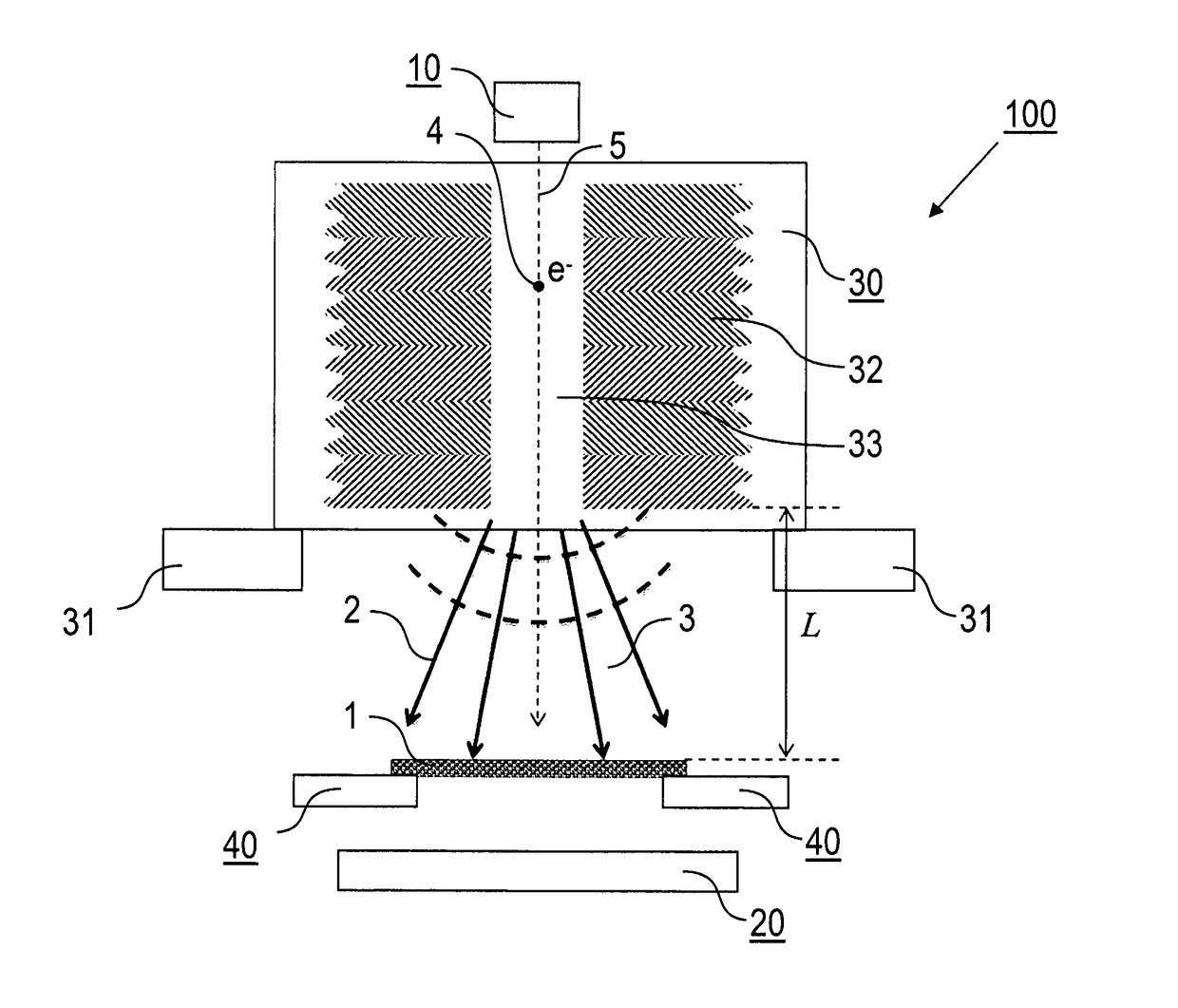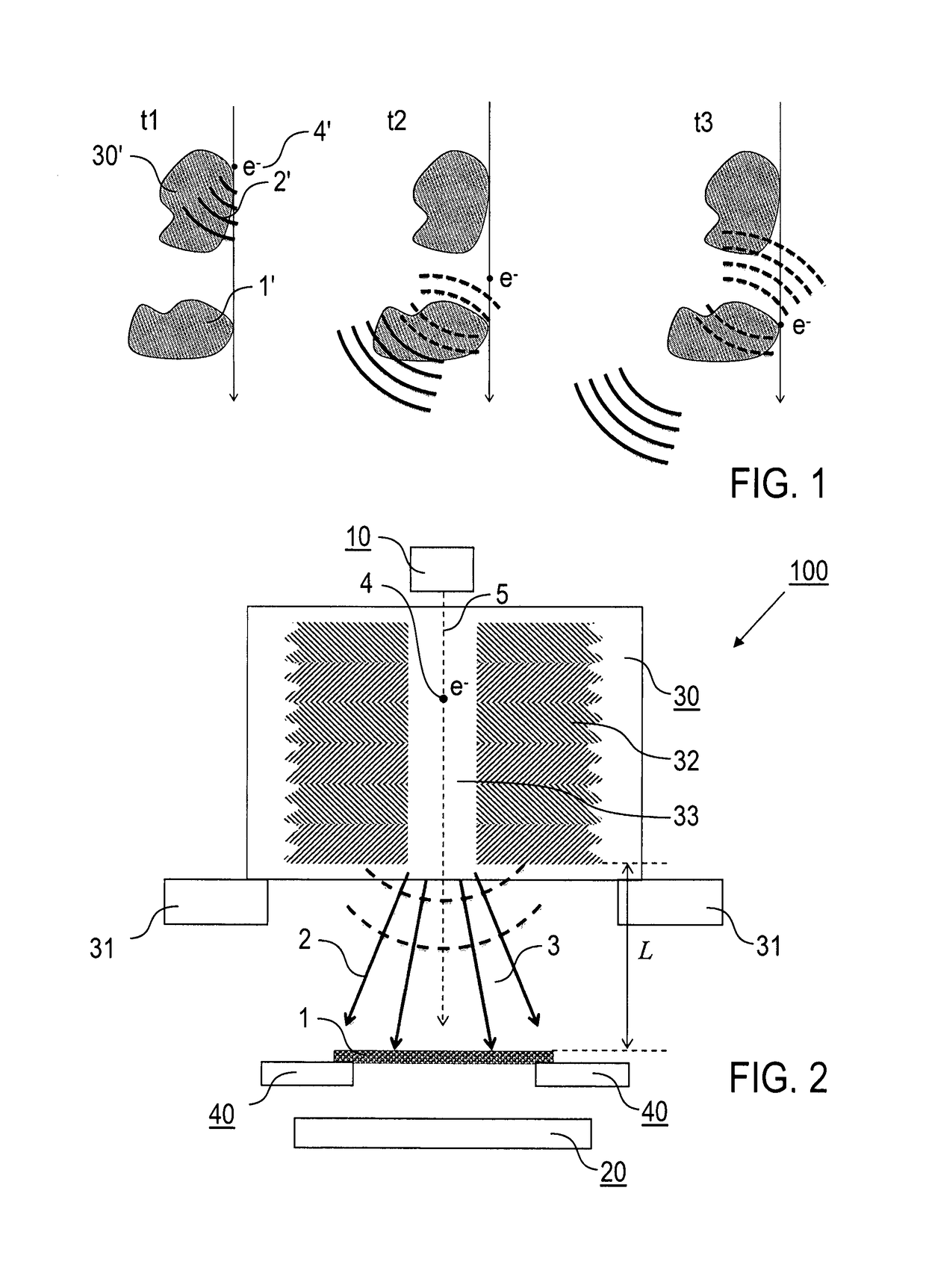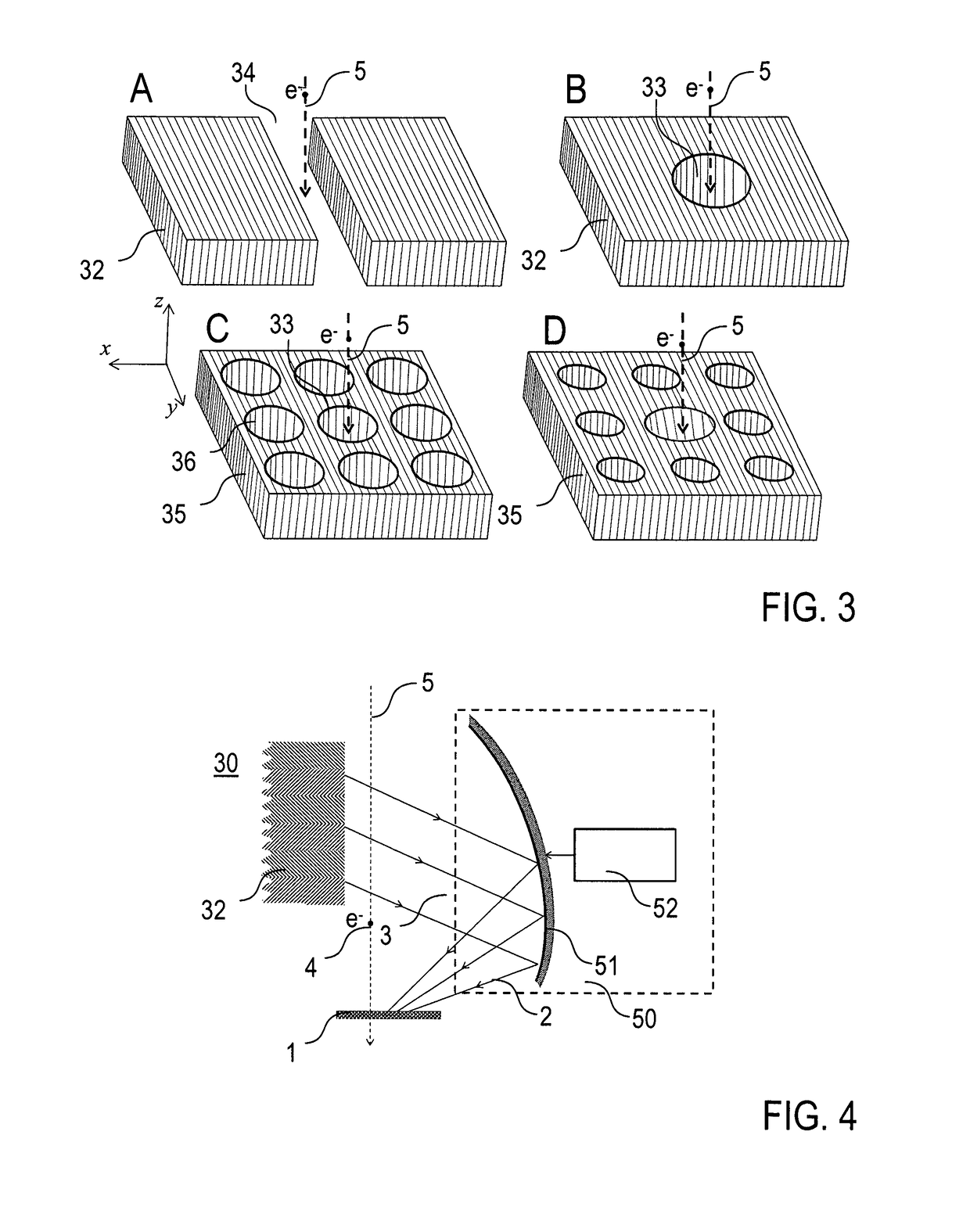Method and device for time-resolved pump-probe electron microscopy
a technology of electron microscopy and pumpprobe, which is applied in the field of time-resolved pumpprobe electron microscopy, can solve the problems of reference set, controllability, structural complexity of optical delay line for adjusting, and conventional techniques have disadvantages, and achieve high accuracy, influence the accuracy of phase recovery, and precise temporal resolution
- Summary
- Abstract
- Description
- Claims
- Application Information
AI Technical Summary
Benefits of technology
Problems solved by technology
Method used
Image
Examples
Embodiment Construction
[0059]Features of preferred embodiments of the invention are described here with particular reference to the creation of photonic pump pulses in an electron microscope using a photonic lattice structure. Details of the electron microscope and the operation thereof, the sample preparation and the signal processing and analysis are not described as far as they are known as such from conventional techniques. Exemplary reference is made to methods of time-resolved pump-probe electron microscopy. It is emphasized that the invention is not restricted to these examples, but rather can be used with other applications combining electron irradiation and photonic irradiation at a sample as well.
[0060]According to a preferred embodiment of the invention, the Smith-Purcell effect is used for creating a photonic reference pulse at a defined flexible reference time, which is independent of the stochastic behavior of a single-electron probe pulse for investigating a sample. The Smith-Purcell emissi...
PUM
| Property | Measurement | Unit |
|---|---|---|
| distance | aaaaa | aaaaa |
| thickness | aaaaa | aaaaa |
| distance | aaaaa | aaaaa |
Abstract
Description
Claims
Application Information
 Login to View More
Login to View More - R&D
- Intellectual Property
- Life Sciences
- Materials
- Tech Scout
- Unparalleled Data Quality
- Higher Quality Content
- 60% Fewer Hallucinations
Browse by: Latest US Patents, China's latest patents, Technical Efficacy Thesaurus, Application Domain, Technology Topic, Popular Technical Reports.
© 2025 PatSnap. All rights reserved.Legal|Privacy policy|Modern Slavery Act Transparency Statement|Sitemap|About US| Contact US: help@patsnap.com



